The Ultimate Guide to Nar Phu Valley Trek
Nar Phu Valley Trek is a very well-kept secret in the Annapurna region and offers the perfect mix of adventure and culture. This trek offers an opportunity to see beautiful mountain scenery, remote villages, and peaceful trails far from crowds. It is a great option for trekkers looking for something different and who wish to explore a unique part of the Himalayas.
Whether you are trekking with or without a guide, Nar Phu Valley offers beautiful landscapes and a rich cultural heritage.
Brief Overview of Nar Phu Valley
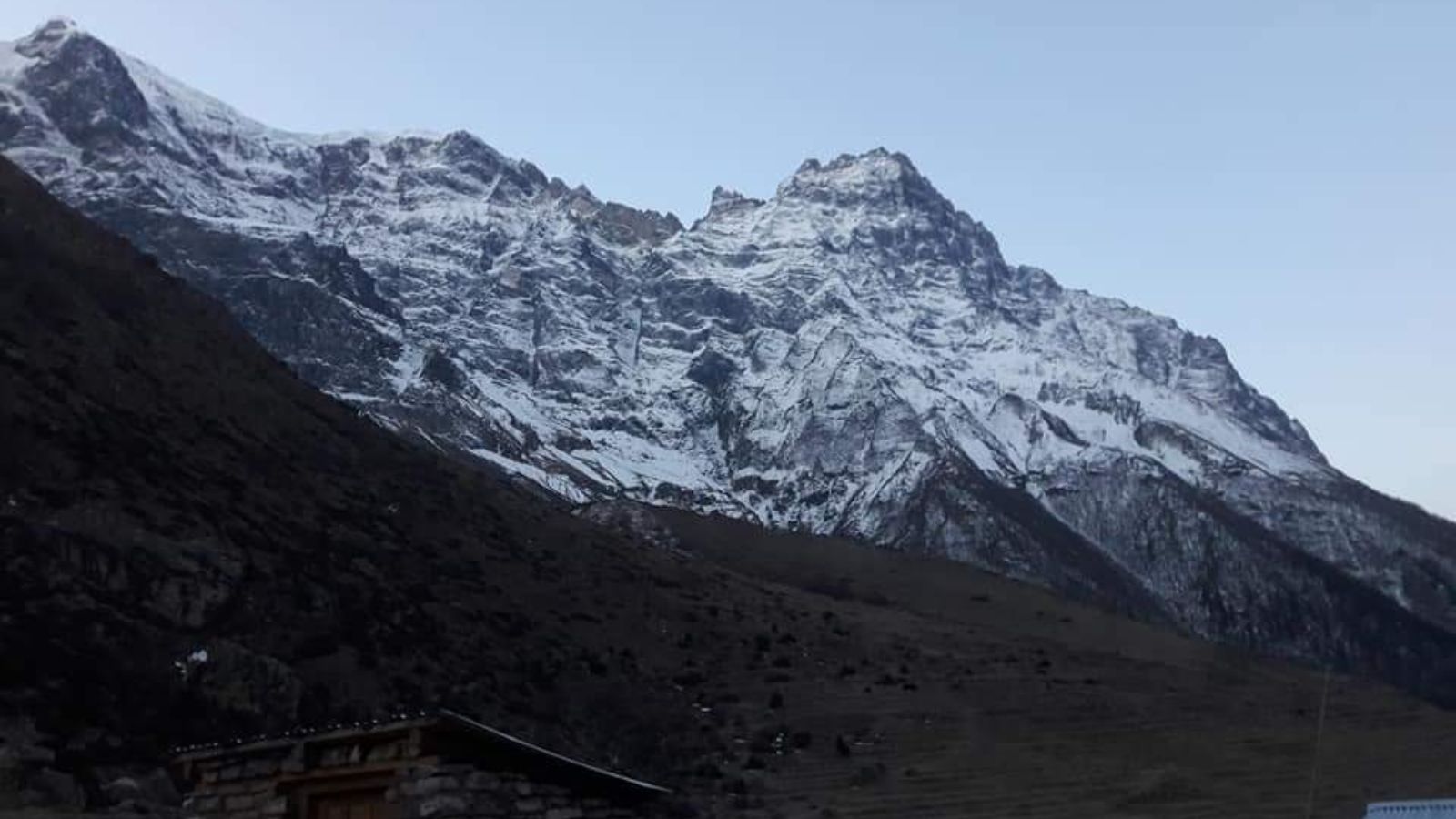
Nar Phu Valley is a hidden gem in the Annapurna region, known for its stunning mountain views and rich culture. It’s home to traditional villages like Nar and Phu, where people have lived the same way for centuries. The area has deep gorges, rocky cliffs, and beautiful untouched trails.
You can visit old Buddhist monasteries, see yaks grazing, and enjoy the peace of this quiet valley. Because it’s so remote, only a few travelers come here, making it perfect for anyone looking for a peaceful Himalayan adventure.
Why is the Trek a Hidden Gem?
Unspoiled Trails: The trek is less crowded than other renowned routes, offering a tranquil and wild trekking experience.
Rich Tibetan Culture: Visit traditional villages where ancient Tibetan customs and ways of life are preserved.
Stunning Mountain Views: Enjoy breathtaking views of Annapurna, Himlung, Kang Guru, and other majestic peaks.
High-Altitude Adventure: Crossing the Kang La Pass at 5,322 meters challenges and offers breathtaking panoramic views.
Ancient Monasteries: Visit centuries-old Buddhist monasteries that reflect the spiritual heritage of the region.
Unique Wildlife and Landscapes: Spot blue sheep and Himalayan birds and experience the dramatic gorges, glaciers, and yak pastures.
Secluded Beauty: Its remote location ensures a serene environment, perfect for trekkers seeking solitude and a sense of discovery.
How to Reach to Nar Phu Valley?
Transportation Options to Koto Village
- Local Bus: The most economical way of travel for trekkers starting from Kathmandu or Pokhara is by bus. It includes a bus drive to Besisahar and another to Koto. Although cheap, it is slower and less comfortable.
- Private Jeep: Faster and more comfortable travel to Koto directly from Kathmandu or Pokhara; this is great for small groups or those with tight schedules. Flexible and convenient.
- Shared Jeep: This option is cheaper and shared with other travelers heading in the same direction. It balances affordability with reasonable comfort, making it great for solo trekkers on a budget.
- Motorbike: An adventurous and scenic way to reach Koto, ideal for experienced riders. It allows flexibility to explore on the way. Be prepared for bumpy roads and some challenging terrain.
- Trekking from Besisahar to Koto: Great for those who would like to extend their trek and enjoy more of the Annapurna region, adding a few days of walking through beautiful landscapes. Best for adventure lovers.
Entry Permits Required for the Trek
Nar Phu Valley Special Permit: This Nar Phu Valley trek permit is needed for trekking and should be organized through a registered trekking agency. It costs around $75 per week during peak season and $50 during off-peak seasons.
Annapurna Conservation Area Permit (ACAP): This permit is necessary for all trekkers who enter the Annapurna region and costs approximately NPR 3,000 for foreigners. It can be obtained in Kathmandu or Pokhara.
TIMS Card: It is sometimes optional for Nar Phu, but sometimes different agencies may ask for the Trekkers' Information Management System (TIMS) card to record the trekkers for safety purposes.
Recommendation Read: How to Obtain Nepal Trekking Permit.
Best Time to Visit Nar Phu Valley
Ideal Seasons for the Trek
1. Spring (March to May)
The temperature is usually mild in spring, with 10°C to 20°C during the day, making it comfortable for trekking. Nights get cold, with temperatures as low as -5°C at higher altitudes. Clear skies and flowers in bloom, especially rhododendrons, make the landscapes more beautiful.
The views of the Himalayan peaks are stunning in this season. It is a very popular time to trek because of the very pleasant weather and magnificent scenery.
2. Autumn (September to November):
This is the peak season for trekking. During the day, the temperature ranges from 10°C to 18°C, suitable for long treks. Nights are cold, especially at higher altitudes, where temperatures drop to -5°C. The weather is dry, offering clear skies and breathtaking mountain views.
The vibrant colors of autumn make the trek even more spectacular. This season provides the perfect conditions for a safe and enjoyable trek.
3. Summer (June to August):
Summer in Nepal coincides with the monsoon season, bringing frequent rainfall and humidity. Daytime temperatures range from 15°C to 25°C in lower regions, but heavy rain makes trails slippery and difficult. Higher altitudes experience cooler temperatures, around 5°C to 0°C at night.
The monsoon season also increases the risk of landslides. While the lush green landscapes are beautiful, the wet conditions make trekking challenging.
4. Winter (December to February):
During winter, the temperature freezes. Daytime temperatures range from 5°C to 10°C, and nighttime temperatures can drop as low as -15°C or even lower at high altitudes. Heavy snowfall may cover the trails, making route-finding difficult and dangerous.
Although it is usually dry, clear views of snow-capped peaks are available, and cold conditions make trekking uncomfortable. Winter is not very viable for most trekkers because of the extreme cold and difficult terrain conditions. Only experienced trekkers should attempt this season.
Featured Trip: Annapurna Circuit Trek
Weather Conditions to Expect
- Clear Skies: During spring and autumn, the skies are usually clear, affording beautiful views of the surrounding peaks. These seasons are perfect for photography and enjoying the breathtaking landscapes.
- Mild Daytime Temperatures: The daytime temperatures range from 10°C to 20°C, thus providing comfortable trekking conditions. It's warm enough for daytime hikes, especially in the lower regions.
- Cold Nights: Nights can get really cold, particularly at higher altitudes, with temperatures dipping to -5°C or lower. Be prepared for chilly evenings and pack accordingly.
- Snow at Higher Altitude: During winter, snow may cover the higher parts of the trail, making the environment quite challenging. It is better to be prepared for icy conditions and difficult terrain.
- Rain and Humidity: In the monsoon or summer, heavy rainfall can make trails slippery, and with high humidity, there is a threat of landslides. Wet conditions make trekking less enjoyable and more dangerous.
Trekking Route and Nar Phu Valley trek itinerary
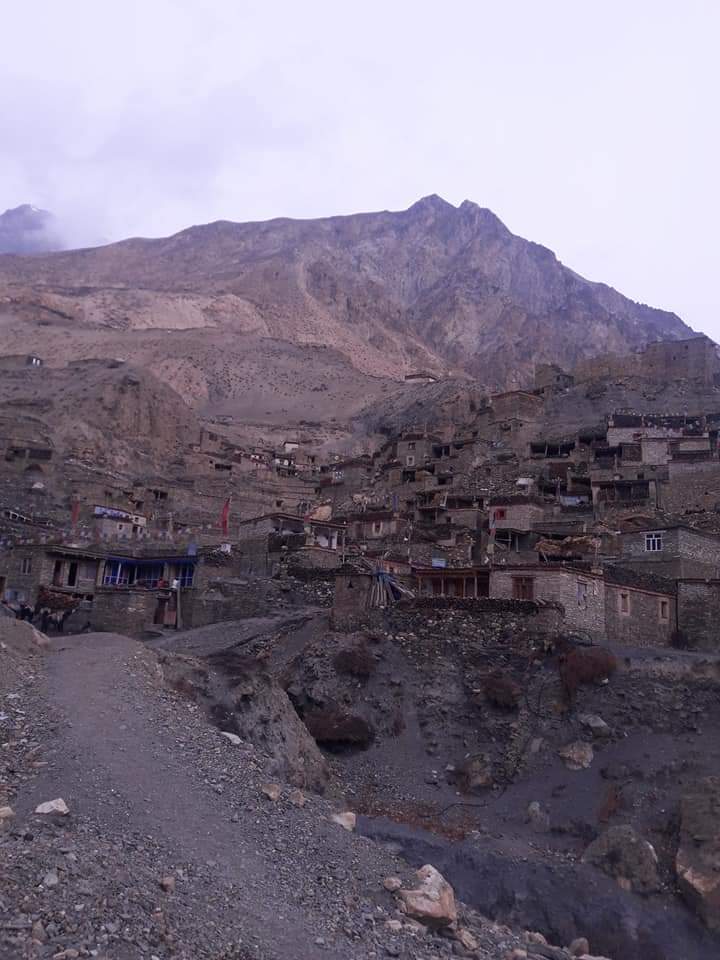
Day-to-Day Breakdown of the Trek
- Day 1: Arrival in Kathmandu and Trek Preparation [1,400 meters | 3-4 hours]
- Day 2: Kathmandu to Besisahar [760 meters | 6-7 hours]
- Day 3: Besisahar to Koto [2,600 meters | 2-3 hours]
- Day 4: Koto to Meta [3,560 meters | 5-6 hours]
- Day 5: Meta to Phu Village [4,080 meters | 7-8 hours]
- Day 6: Explore Phu Village [4,080 meters | Rest day]
- Day 7: Phu Village to Nar Village [4,100 meters | 4-5 hours]
- Day 8: Nar Village to Kang La Pass Base Camp [4,850 meters | 5-6 hours]
- Day 9: Kang La Pass to Ngawal [3,660 meters | 7-8 hours]
- Day 10: Ngawal to Besisahar [760 meters | 6-7 hours]
- Day 11: Departure from Kathmandu [1,400 meters | 6-7 hours]
Major Landmarks and Stopovers
1. Koto
Koto is the legitimate starting point of the trek. It is a tiny village nestled at the foot of the valley. It is a serene settlement with basic facilities and the first place to get a feel for the surrounding ruggedness. Koto works as the entranceway to the backcountry.
2. Meta
Meta is a tiny, quiet village at 3,560 meters where trekkers rest and acclimatize. The trek from Koto to Meta passes through lush forests and beautiful valleys. The village consists of Tibetan-style houses, and the views of the mountains are amazing.
3. Phu Village
Phu Village, at 4,080 meters, offers a peek into the unique Tibetan culture of the area. It's a quiet village where one can visit monasteries and hang out with the locals. The scenic beauty surrounding Phu, with panoramic mountain views, makes it a memorable stopover.
4. Nar Village
Nar Village, situated at 4,100 meters, is a traditional village with Tibetan influences. The village is known for its unique architecture and scenic views of the surrounding peaks. It's a great place to experience local culture before crossing the Kang La Pass.
5. Kang La Pass
Kang La Pass, at 5,320 meters, forms the trek's highest point and offers a stunning panorama of the Annapurna range and other peaks. With the brilliant landscape and altitude, this part of the trek is demanding but rewarding.
6. Ngawal
Ngawal, situated at an altitude of 3,660 meters, follows the top immediately after Kang La Pass. The trek is facilitated by nice lodges accommodating trekkers and the resting spot of the trekkers. Trekkers enjoy the Annapurna range views from here, continuing to Besisahar.
7. Besisahar
Besisahar is the starting and ending point of the trek. It is a busy town with services and different transportation means. Besisahar is also an excellent place to unwind and reflect on this fantastic adventure.
Alternative Routes and Side Trips
1. Trekking to Annapurna Circuit
The trek can be combined with the Annapurna Circuit via Manang for a longer trek. This will allow for more varied landscapes of the Annapurna region and more high-altitude trekking. The junction at Manang makes for an easy continuation of your trek.
2. Side Trip to Tashi Lhakhang Monastery
Take a short side trip from Phu Village to visit the Tashi Lhakhang Monastery, a significant cultural and religious site. The monastery offers insight into the region's Tibetan Buddhist practices and provides a peaceful retreat with stunning views of the surrounding valleys.
3. Kang La Pass Extension
As an extended adventure, consider the side trip around the region of Kang La Pass: explore a local peak or some hidden valleys. The additional days in this extension offer a real sense of remoteness, incredible panoramic views, and the opportunity to delve deeper into the ruggedness of the Himalayas.
4. Exploring the Base of Gangapurna
For breathtaking views, make an extra-day side trip to the base of Gangapurna Glacier. The glacier offers a spectacular view and less noise away from the main trekking route. Indeed, this detour will award the trekkers unique views of the surrounding peaks.
Essential Trekking Preparations For Nepal
Packing Essentials
Clothing
- Base Layers: Light, perspiration-wicking shirts and pants to keep one warm in the heat by layering.
- Mid Layers: Fleece or down jackets to stay warm during cold regions of the trek.
- Outer Layers: Rain and wind-resistant jacket and pants to protect from the weather.
- Trekking Pants: For comfortability and durability for smooth moments of movement.
- Warm Hat & Gloves: Important for cold weather conditions, especially at high altitudes.
- Sun Protection: A wide-brimmed hat or cap to save one from the sun. Click Here to know about more trekking equipments.
Footwear
- Trekking Boots: Waterproof, sturdy, and well-broken-in for rocky and rugged terrain.
- Camp Shoes: Comfort sandals or light shoes to rest in during the evenings.
- Socks: Wool or synthetic to avoid blisters and for warmth.
Sleeping Gear
- Sleeping Bag: High-quality sleeping bag rated for cold temperatures (at least -10°C).
- Sleeping Pad: Insulated pad for extra warmth and comfort at night.
Trekking Gear
- Backpack: Comfortable daypack (25-40 liters) for day-to-day trekking.
- Trekking Poles: Help reduce strain on the knees and provide stability.
- Water Bottle & Water Purification: A refillable bottle and purification tablets or a filter to ensure safe drinking water.
- Headlamp & Extra Batteries: Essential for early morning or evening trekking.
For more details view, read our blog Trekking Gear in Nepal.
Personal Items
- Sunscreen & Lip Balm: Protect your skin and lips from sunburn at higher altitudes.
- First Aid Kit: Basic supplies such as painkillers, bandages, antiseptic cream, and any personal medications.
- Toiletries: Biodegradable soap, toothpaste, and toilet paper for personal hygiene.
- Trekking Map: A Nar Phu Valley trek map to help navigate the route.
Food & Snacks
- Energy Bars & Snacks: For extra energy, try high-calorie snacks such as nuts, dried fruits, and granola bars.
- Trekking Meals: Lightweight, easy-to-cook meals or a portable stove if necessary.
Documents & Permits
- Trekking Permits: TIMS Card and Annapurna Conservation Area Permit (ACAP).
- Passport & Copies: Bring your passport and photocopies for identification and permits.
Electronics
- Camera: To shoot the brilliant landscapes and moments you encounter during the trek.
- Chargers & Power Bank: This is for charging your phones or cameras in remote areas.
Miscellaneous
- Plastic Bags: To store dirty clothes or keep items dry.
- Cash: Local currency is necessary to buy snacks and pay for services on the way to the trek.
- Waterproof Dry Sacks: Keep your valuables safe and dry, especially on rainy days.
Challenges and Safety Tips
1. Altitude Sickness
It is crucial to acclimatize the body to avoid altitude sickness. Ascend in steps and take rest days to get used to higher altitudes. If you encounter dizziness or shortness of breath, descend, followed by immediate medical attention.
2. Remote Terrain
The trekking often includes rugged and challenging trails. Bring a map or GPS device and stay on marked paths to avoid getting lost in this remote, mountainous landscape.
3. Weather Conditions
Weather conditions may change unpredictably, even with sudden rain, snow, or high wind in higher altitudes. Pack accordingly for all kinds of weather and pay attention to weather forecasts for any sudden changes.
4. Limited Medical Access
In remote areas, medical facilities can be hard to find, and rescue often takes time. In case of injury or sickness, carry a first aid kit with all essential medicines and knowledge of basic procedures.
5. Physical Endurance
The trek is challenging terrain-wise and consists of several long days of trekking that require good physical fitness. Before embarking on the trek, build up endurance and stamina ahead of time through cardiovascular workouts coupled with strength training.
6. Hiring a Guide/ Porter
Hiring a guide means safety when traversing, especially in remote areas where following trails is almost impossible. While it's possible to do the Nar Phu Trek without a guide, having a guide with you makes it smoother and even safer, especially while crossing very difficult terrain. A porter will be able to help you with carrying heavy gear and, thus, make the trek more comfortable and enjoyable for you.
Accommodation and Food Options
Types of Lodging Available on the Trek
- Teahouses: The most common accommodation in teahouses is simple rooms with shared facilities. They offer a warm atmosphere in which to socialize with other trekkers.
- Guesthouses: These are smaller, family-run businesses, a step up from teahouses. Most offer private rooms and home-cooked meals for a more personal experience.
- Basic Lodges: Within the more remote areas, basic lodges offer minimal facilities and are necessary for trekkers. These accommodations are ideal for those who want a somewhat rustic experience.
- Camping: Teahouses exist almost everywhere, but some trekkers may want to camp in allowed places. Camping provides a chance to be at one with nature but requires extra gear and preparation.
- Home Stays: Some trekkers prefer to stay in local homes, where a family takes them in. This is the best way to experience culture, food, and local hospitality.
- Monastery Stays: In some places, trekkers can stay in monasteries. A monastery stay is peaceful and spiritual, with basic but welcoming facilities.
What to Expect in Terms of Meals
- Basic Nepali Cuisine (Dal Bhat, Lentil Soup with Rice, Vegetables, Pickles)
- Vegetarian Options (Rice, Potatoes, Lentils, Veggie Curries)
- International Dishes (Pasta, Noodles, Pancakes)
- Snacks and Energy Foods (Nuts, Biscuits, Chocolate, Energy Bars)
- Hot Drinks (Tea, Coffee, Hot Chocolate)
- Simple and Nutritious Meals (Rice, Lentils, Vegetables, Thukpa)
Conclusion
The Nar Phu Valley Trek is an exciting journey, offering stunning views and an opportunity to explore Nepal's hidden beauty. Due to its unique landscapes and rich culture, it is ideal for those looking for something different. While this trek can be challenging, the rewards are unforgettable.
If you want to explore this incredible destination, Dolpo Caravan Treks can help you plan the perfect journey. With their expertise, get ready for the adventure of a lifetime!
FAQs
What is the best time to do the Nar Phu Trek?
It offers favorable weather in the spring (March to May) and autumn (September to November), the best trekking times. These months present an opportunity to see crystal clear skies, pleasant temperatures, and astounding views. The Monsoon period should be avoided since rain can make the trail slippery and difficult to handle.
Do I need a trek guide?
While it is possible to do the Nar Phu Trek without a guide, hiring one is highly recommended. A guide can help you navigate remote trails, provide safety advice, and enhance your overall experience. The absence of a guide might expose trekkers, especially those unfamiliar with the region, to risks of all kinds.
What is the altitude of Nar Phu?
The altitude at a high pass, Kang La, is 5,400 meters (17,717 feet). As with most high-altitude treks, altitude sickness is common; therefore, appropriate acclimatization must be ensured. Symptoms of altitude sickness need to be watched out for, and rest days must be taken as necessary.
How difficult is the Nar Phu Trek?
The trek is considered moderate to difficult because of its extreme remoteness, altitude, and rugged terrain. It includes steep climbs and long trekking days; some parts require good physical fitness. However, it is conceivable for those with prior trekking experiences.
What permits do I need for the Nar Phu Trek?
You need an ACAP for the Annapurna Conservation Area and a special permit for the trek. This Nar Phu permit can be availed only through a registered trekking agency in addition to extra paperwork. In any case, both permits must be carried throughout the length of the trek.
How much does the Nar Phu Valley Trek cost?
The cost factor of the trek depends on factors such as duration, accommodations, and whether you employ the services of a guide or porter. It costs, on average, from $1000 to $1500 for 12-14 day treks, covering all the permits, accommodation, food, and guide or porter fees. One would always want a detailed estimate before booking.

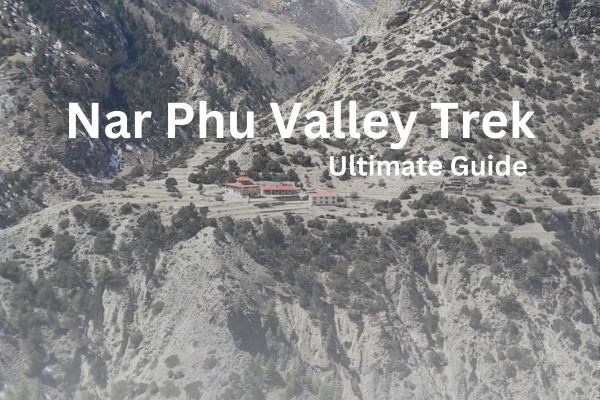
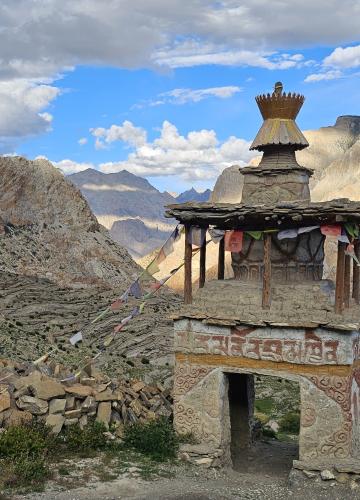
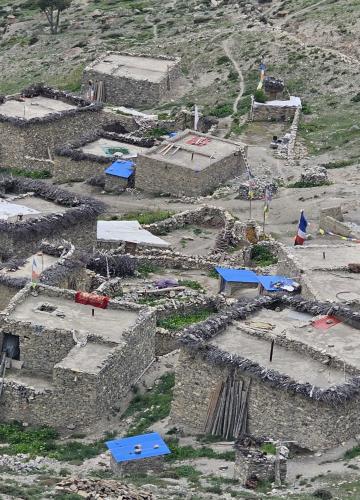
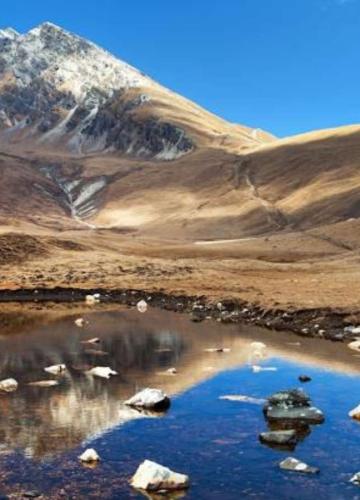
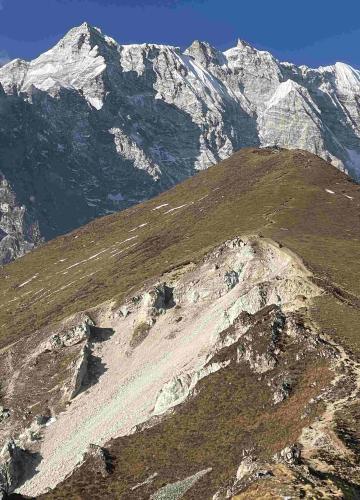
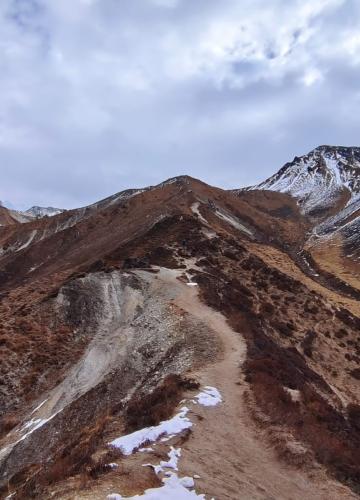
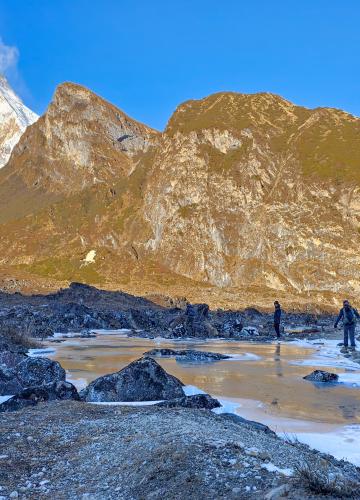

Leave Your Comment